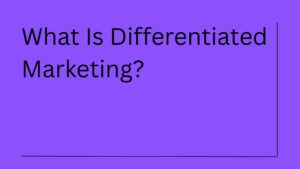In recent years, generative AI has emerged as one of the most exciting advancements in technology, reshaping how we create, communicate, and innovate. But what exactly is generative AI, and how does it differ from traditional artificial intelligence? This guide will take you through the fundamentals, exploring its capabilities, applications, and the implications it holds for various industries. Whether you’re a tech enthusiast or just curious about the future of AI, you’ll find valuable insights that will deepen your understanding of this transformative technology. Let’s dive in!
What Is Generative AI?
Generative AI, at its core, is a transformative force within artificial intelligence that pushes the boundaries of creativity and automation. Unlike traditional AI, which functions primarily by identifying existing patterns in data to predict future outcomes or classify information, generative AI aims to create. Think of it like an AI-powered artist or composer. Given specific input, this technology can create new pieces of content—be it music, images, videos, or text—that didn’t exist before. The key here is the “generative” nature, where new data is synthesized rather than simply recognized or categorized.
This process is far from random. Generative AI models are trained on vast amounts of data and learn the underlying patterns of that data, enabling them to produce outputs that are not only new but also remarkably similar in structure and style to the original inputs. Whether generating text that mimics human writing or producing realistic images from abstract prompts, generative AI opens doors to innovation across multiple industries.
Practical Applications of Generative AI
The applications of generative AI are vast and constantly expanding. In the realm of art and entertainment, tools like DALL-E and Midjourney allow creators to produce stunning images based on written descriptions, transforming the creative workflow. In music, models such as Aiva can compose unique melodies, offering musicians new ways to collaborate with AI. Even in scientific research, generative AI shows promise by assisting in fields such as drug discovery, where it can rapidly generate and test molecular structures.
As AI evolves, the generative aspect becomes increasingly integral to how industries across the board innovate and produce value.
Understand Generative AI and How it Works
To grasp the intricacies of generative AI, it helps to look under the hood and see how this technology works. The process generally involves a few key components: training data, the learning model, and the generation process.
Training Data and Patterns
The first step in creating a generative AI model is to train it using a large dataset. This data can take the form of text, images, audio, or any other type of content, depending on what the AI is designed to generate. For instance, a text-based generative AI like ChatGPT is trained on extensive corpora of human language, learning grammar, sentence structure, and even the subtle nuances of tone and style.
Once the data is fed into the model, the AI learns patterns within it. These patterns can be anything from the rhythm of language to the color contrasts in a set of images. By understanding these underlying patterns, the AI can later use this knowledge to generate new data that mirrors the qualities of the original dataset.
This is where generative AI differs from traditional AI models. Rather than just identifying patterns for predictive or classification purposes, generative AI uses these patterns to create something new—new text, new images, or even new pieces of music.
Transfer Learning and Pretrained Models
Generative AI owes a great deal of its efficiency to a technique called transfer learning. Instead of starting from scratch with a new dataset every time, many generative AI models leverage pretrained models that have already been trained on vast datasets. This allows developers to fine-tune these models using specific data, guiding the AI to generate content that aligns with particular styles or themes.
Take GPT-3, for example. As a pretrained model, it has been exposed to vast amounts of text from across the internet. By fine-tuning it with more focused training data, developers can tailor GPT-3 to write in specific styles or generate content for unique applications, like chatbots, creative writing, or technical documentation.
Evaluation and Improvement
While the generation process might seem like magic, evaluating the quality of what a generative AI produces is crucial for continuous improvement. The quality of the outputs is often subjective, depending on human judgment. For instance, the realism of an AI-generated image or the coherence of a generated text passage can vary widely based on context and user expectations.
Metrics such as visual inspection or user feedback play a significant role in refining the models. In some cases, domain-specific measures—like adherence to grammatical rules in a text or the accuracy of generated chemical structures—are used for evaluation. Through continuous feedback and iteration, generative AI models can improve over time, becoming more precise in their outputs.
Types of Generative Artificial Intelligence
Generative AI can be built using different architectural frameworks, each with its own unique strengths. Here’s a closer look at three of the most widely used models in this space: Generative Adversarial Networks (GANs), Variational Autoencoders (VAEs), and Autoregressive Models. Each of these models plays a distinct role in how AI can generate content, from producing realistic images to crafting natural-sounding text.
1. Generative Adversarial Networks (GANs)
Among the most groundbreaking innovations in generative AI are Generative Adversarial Networks (GANs). Introduced by Ian Goodfellow in 2014, GANs consist of two competing neural networks: the generator and the discriminator. The generator’s job is to create new data (for example, generating a new image), while the discriminator attempts to differentiate between real data (from the training set) and the fake data generated by the generator.
This dynamic creates a feedback loop where both networks learn from each other. Over time, the generator improves its ability to produce realistic outputs because it’s constantly trying to “fool” the discriminator. On the other hand, the discriminator becomes better at detecting fake data. This adversarial process is what enables GANs to produce some of the most convincing AI-generated images, videos, and even music.
A key advantage of GANs is their ability to generate highly realistic outputs. For instance, GANs have been used to create AI-generated portraits that are almost indistinguishable from real human faces. In the creative industry, GANs are being used to generate concept art, video game assets, and even virtual environments for movies.
However, training GANs can be challenging. The balance between the generator and discriminator is delicate, and if one outpaces the other too quickly, the model may fail to produce convincing results.
2. Variational Autoencoders (VAEs)
Variational Autoencoders (VAEs) operate a little differently. These models are designed to learn efficient representations of the input data, which they store in a simplified, compact form known as the latent space. This latent space can be thought of as a compressed version of the input data, preserving essential information while discarding less important details. The VAE can then use this latent space to generate new data that is similar to the original input.
VAEs are particularly useful for applications like image generation and data compression. For example, VAEs can generate new images by tweaking the variables within the latent space, allowing for smooth transitions between different variations of an image. This makes VAEs highly valuable in creative fields, where the ability to explore variations of a design or concept is often required.
One of the primary advantages of VAEs is their ability to maintain a balance between the accuracy of the generated data and the variety of outputs. However, VAEs typically generate less sharp and detailed images than GANs, making them better suited for certain tasks, like generalizing across broader categories of data or creating creative content with a degree of abstraction.
3. Autoregressive Models
Autoregressive models are perhaps best known for their application in natural language processing (NLP). These models generate data one element at a time, with each new element depending on the previous ones. For example, in text generation, an autoregressive model generates one word at a time based on the words that have already been generated, ensuring that the resulting text flows naturally and makes sense in context.
GPT-3 (Generative Pretrained Transformer), a well-known autoregressive model, exemplifies the power of this approach. When generating text, GPT-3 starts with an initial word or prompt and predicts the next word by analyzing the preceding text. It repeats this process iteratively, gradually building a coherent sentence, paragraph, or even a full-length article.
Autoregressive models shine in applications where the structure and order of data are important. In language models, for example, they ensure that sentences follow logical syntax and context. This approach is particularly effective for generating long-form text, like articles, stories, or technical documentation. The main limitation, however, is that these models can struggle with maintaining coherence in very long outputs, occasionally losing track of context if the text spans too far.
Examples of Various Areas That Use Generative AI
Generative AI is a versatile technology with a wide range of applications across industries. From creative arts to cutting-edge scientific research, its impact is being felt in numerous areas. Let’s explore some examples of how generative AI is revolutionizing different sectors.
1. Natural Language Processing (NLP)
One of the most prominent applications of generative AI is in Natural Language Processing (NLP), where models like GPT-3 and Anthropic’s Constitutional AI are used to generate human-like text. These models are capable of drafting anything from casual conversations to professional emails, complex code snippets, or even entire stories. The impact of generative AI in the field of NLP is immense, particularly for industries that rely heavily on content generation, such as marketing, journalism, and customer service.
For instance, many businesses now use AI-powered chatbots to handle customer inquiries, while writers leverage tools like GPT-3 to speed up the drafting process. The ability to quickly generate content that sounds natural and engaging saves countless hours, freeing up human workers for more complex and creative tasks.
2. Creative Visual Models
Generative AI is also revolutionizing the world of visual arts. Tools like DALL-E 2 and Stable Diffusion allow users to generate stunning, photorealistic images from simple text prompts. This technology is a game-changer for designers, artists, and marketers who can now quickly visualize ideas without needing to create each element manually.
Imagine a user describing a bustling city street in the rain, and the AI generating a vivid image of that scene within seconds. This capability not only speeds up the creative process but also democratizes it, giving individuals without formal artistic training the ability to create professional-grade visuals.
3. Music Composition
Generative AI is making waves in the music industry as well. Platforms like Aiva can generate original music in a variety of genres, providing a valuable tool for musicians and composers. Whether it’s a jazz composition, an orchestral score, or a pop melody, AI-generated music can serve as a foundation that artists can build upon. This technology offers endless possibilities for experimentation, allowing musicians to explore new sounds and ideas.
For instance, an artist working on a new album could use Aiva to generate a series of melodies, selecting and refining the ones that resonate most with their vision. This kind of collaboration between human creativity and AI is reshaping the creative process in music production.
4. Drug Discovery and Healthcare
Generative AI has promising applications in the healthcare and pharmaceutical industries, where it is being used to accelerate drug discovery. Companies like Exscientia employ AI to design new molecules with specific pharmaceutical properties. This AI-driven approach enables researchers to test countless molecular structures in a fraction of the time it would take using traditional methods, potentially leading to breakthroughs in medicine.
The ability of generative AI to simulate the behavior of molecules allows for faster iteration cycles, reducing the time and cost associated with developing new treatments. This is particularly important in fields like oncology, where the discovery of new drugs can significantly impact patient outcomes.
Conclusion
Generative AI is undeniably one of the most transformative technologies in recent years, with applications ranging from creative endeavors to scientific advancements. By harnessing its ability to generate content that closely mirrors human creativity, industries across the board are finding new ways to innovate and solve complex problems.
As this technology continues to evolve, its potential to revolutionize the way we create, discover, and interact with the world will only grow. Whether you’re an artist looking for new ways to visualize your ideas, a researcher in need of faster drug discovery methods, or a business aiming to automate content creation, generative AI offers exciting possibilities that can reshape the future.





